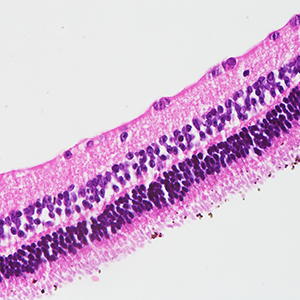Effects of artificial light with different spectral composition on eye axial growth in juvenile guinea pigs

Accepted: 30 January 2023
HTML: 19
All claims expressed in this article are solely those of the authors and do not necessarily represent those of their affiliated organizations, or those of the publisher, the editors and the reviewers. Any product that may be evaluated in this article or claim that may be made by its manufacturer is not guaranteed or endorsed by the publisher.
Authors
The purpose of the study was to investigate the effect of artificial light with different spectral composition and distribution on axial growth in guinea pigs. Three-week-old guinea pigs were randomly assigned to groups exposed to natural light, low color temperature light-emitting diode (LED) light, two full spectrum artificial lights (E light and Julia light) and blue light filtered light with the same intensity. Axial lengths of guinea pigs’ eyes were measured by A-scan ultrasonography prior to the experiment and every 2 weeks during the experiment. After light exposure for 12 weeks, retinal dopamine (DA), dihydroxy-phenylacetic acid (DOPAC) levels and DOPAC/DA ratio were analyzed by high-pressure liquid chromatography electrochemical detection and retinal histological structure was observed. Retinal melanopsin expression was detected using Western blot and immunohistochemistry. After exposed to different kinds of light with different spectrum for 4 weeks, the axial lengths of guinea pigs’ eyes in LED group and Julia light group were significantly longer than those of natural light group. After 6 weeks, the axial lengths in LED light group were significantly longer than those of E light group and blue light filtered group. The difference between axial lengths in E light group and Julia light group showed statistical significance after 8 weeks (p<0.05). After 12 weeks of light exposure, the comparison of retinal DOPAC/DA ratio and melanopsin expression in each group was consistent with that of axial length. In guinea pigs, continuous full spectrum artificial light with no peak or valley can inhibit axial elongation via retinal dopaminergic and melanopsin system.
Supporting Agencies
National Nature Science Foundation of China (Grant No.82074496 and No.81904256) and Science and Technology Project Foundation of Liyang (LC2019001)How to Cite

This work is licensed under a Creative Commons Attribution-NonCommercial 4.0 International License.
PAGEPress has chosen to apply the Creative Commons Attribution NonCommercial 4.0 International License (CC BY-NC 4.0) to all manuscripts to be published.

 https://doi.org/10.4081/ejh.2023.3634
https://doi.org/10.4081/ejh.2023.3634






